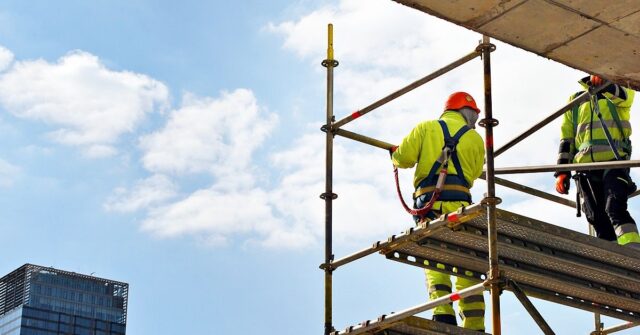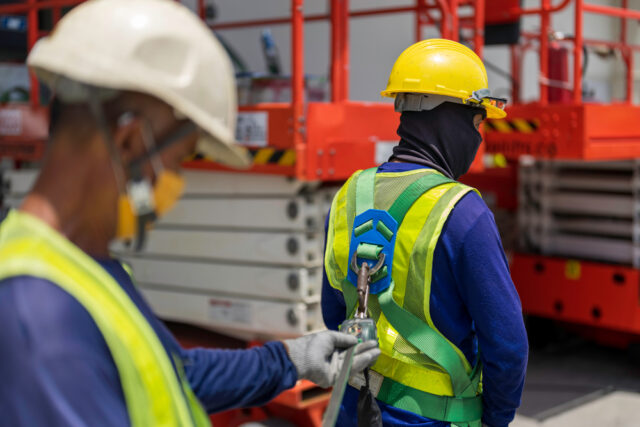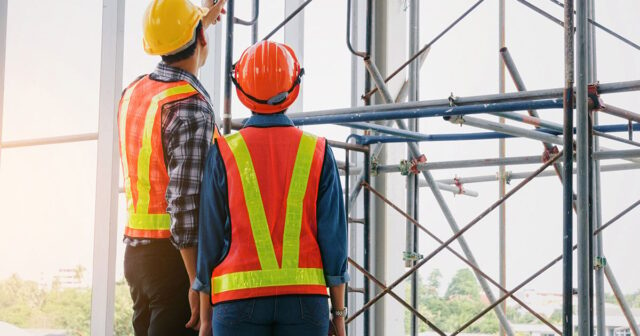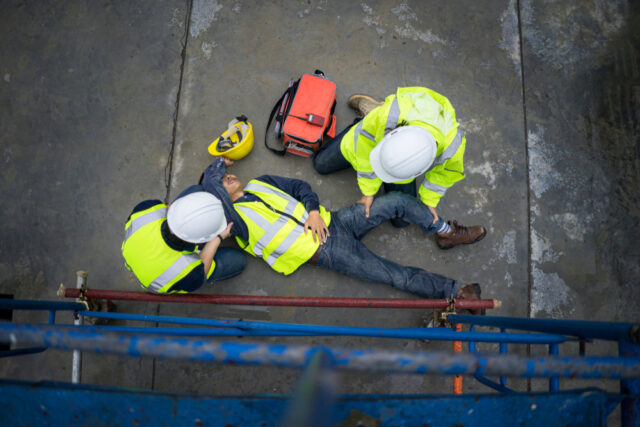
Construction sites are bustling hubs of activity, with workers busily erecting edifices that touch the sky. Among the many tools and equipment they use, scaffolding is indispensable.
These temporary structures provide workers access to the lofty heights needed for carpentry, plumbing, and electrical work.
Yet, the usefulness of scaffolding carries a significant disclaimer – if it’s not correctly set up or adequately kept up, it can result in serious mishaps, necessitating the assistance of scaffolding accident attorneys specializing in these accidents.
Continue reading to dive into the specifics and understand the seven most prevalent causes behind such incidents.
The Legal Rights of Victims

Victims of scaffolding accidents have specific rights protected by law. These rights are crucial in ensuring their safety and well-being following an accident, and they form the foundation for any legal action with scaffolding accident attorneys that may be taken to seek compensation for damages.
- Right to Medical Treatment: Victims have the right to receive immediate medical attention after a scaffolding accident. This is not just a fundamental human right; it’s also crucial for documenting injuries related to the accident.
- Right to Compensation: Individuals impacted by such accidents maintain the right to seek financial recompense if the incident resulted from another party’s carelessness or failure to adhere to safety guidelines. This compensation can encompass costs related to medical treatments, income lost due to inability to work, emotional distress, and other resulting damages.
- Right to a Safe Work Environment: Employers have a legal duty to provide a safe work environment. They can be held accountable if they fail to do so and an accident happens.
- Right to Report the Accident: Victims can report the incident to the relevant authorities without fear of retaliation or discrimination. This can be instrumental in investigating the cause of the accident.
- Right to Legal Representation: Victims can hire scaffolding accident attorneys to represent them in all legal proceedings related to the accident. Scaffolding accident attorneys can help navigate the complexities of the law, protect the victims’ rights, and fight for the compensation they deserve.
Understanding these rights is the first step toward obtaining justice. However, navigating the legal landscape can be challenging. That’s where scaffolding accident attorneys come in.
They can provide the necessary guidance, support, and representation to uphold victims’ rights throughout the process.
Employer’s Responsibilities and Legal Obligations

Employers bear a significant responsibility to ensure a safe working environment. They must comply with safety precautions and rid the workplace of known health hazards.
However, due to perceived costs or a lack of necessity, some construction companies fail to maintain their equipment properly, compromising the safety of their workers.
Role of OSHA Laws in Scaffolding Safety
The Occupational Safety and Health Administration (OSHA) has established strict laws regarding scaffolding safety. Employers who flout these laws and put their workers at risk can be held liable for any resulting damages.
Understanding and adhering to these laws is crucial in preventing scaffolding accidents and fostering a safety culture within the construction industry.
7 Most Common Causes of Scaffolding Accidents

Now that we understand the importance of safety regulations and the role of scaffolding accident attorneys, let’s delve into the most common causes of scaffolding accidents.
1. Improper Scaffolding Construction and Installation
Erecting scaffolding involves careful planning and execution. Any deviation from the recommended procedures could result in unstable structures that pose significant risks.
Errors such as using incompatible parts, not securing the scaffold properly to a solid construction, or failing to level the platform can contribute to instability. This instability can lead to the scaffolding tipping over or collapsing, causing severe injuries and even fatalities.
2. Defective Equipment
Scaffolding comprises numerous components, each crucial in its overall structural integrity. Faulty equipment, like broken planks, corroded poles, or weak connectors, can drastically compromise the strength and stability of the scaffolding.
Sometimes, these defects may not be immediately visible, giving workers a false sense of security. A thorough inspection by a competent person can help identify such weaknesses early on, allowing for timely rectification and preventing potential accidents.
3. Insufficient Fall Protection

Working at height inherently comes with the risk of falls. OSHA mandates the use of fall protection measures on scaffolds more than 10 feet above a lower level. This includes personal fall arrest systems like safety harnesses and guardrail systems.
If these protective measures are not provided, not used, or misused, the risk of fall-related accidents significantly increases. Falls from height can lead to severe injuries like fractures, spinal injuries, and traumatic brain injuries and are often fatal.
4. Lack of or Inadequate Safety Equipment Features
Beyond fall protection, other safety features are also critical for preventing accidents on scaffolding. Toe boards, mid-rails, and guardrails help prevent workers from accidentally stepping off the edge.
They also prevent tools and materials from being knocked off the scaffold, which could injure people below. If these safety features are missing, inadequately installed, or not robust enough to withstand the forces they might be subjected to, the scaffolding becomes a hazardous workplace.
5. Failure to Provide Proper Maintenance
Like any equipment, scaffolding components can wear out or damage. Exposure to the elements can cause corrosion, while heavy loads can lead to material fatigue. These issues can escalate without regular maintenance, increasing the risk of scaffold failure.
Effective care should include regular inspections, immediate replacement or repair of damaged parts, and periodic testing of the scaffolding’s load-bearing capacity.
6. Neglect in Supervision

Supervisors play a pivotal role in ensuring workplace safety. They are responsible for overseeing that all safety protocols are being adhered to, ensuring workers are adequately trained, ensuring safety equipment is being used correctly, and promptly identifying and addressing hazards.
If supervisors neglect their duties, crucial safety breaches may go unnoticed, increasing the likelihood of accidents.
7. Ignorance or Disregard for Safety Protocols
Safety rules and regulations are designed to protect workers. However, if workers are not adequately informed about these rules or choose to disregard them, they expose themselves and their colleagues to unnecessary risks.
This highlights the importance of regular safety training sessions and strict enforcement of safety rules. Employers should foster a culture of safety where everyone understands their roles and responsibilities in preventing accidents.
Enlisting Scaffolding Accident Attorneys: Key to Navigating Legal Challenges

Scaffolding accidents can be devastating, but they’re not inevitable. We can significantly reduce the occurrence by understanding the common causes and emphasizing the importance of safety protocols.
Remember, if you or a loved one become a victim of such an accident, don’t hesitate to contact experienced scaffolding accident attorneys.
They can guide you through the legal maze and help you secure the compensation you rightfully deserve. As we continue to build our cities upwards, let’s not forget the importance of building a safety culture.












